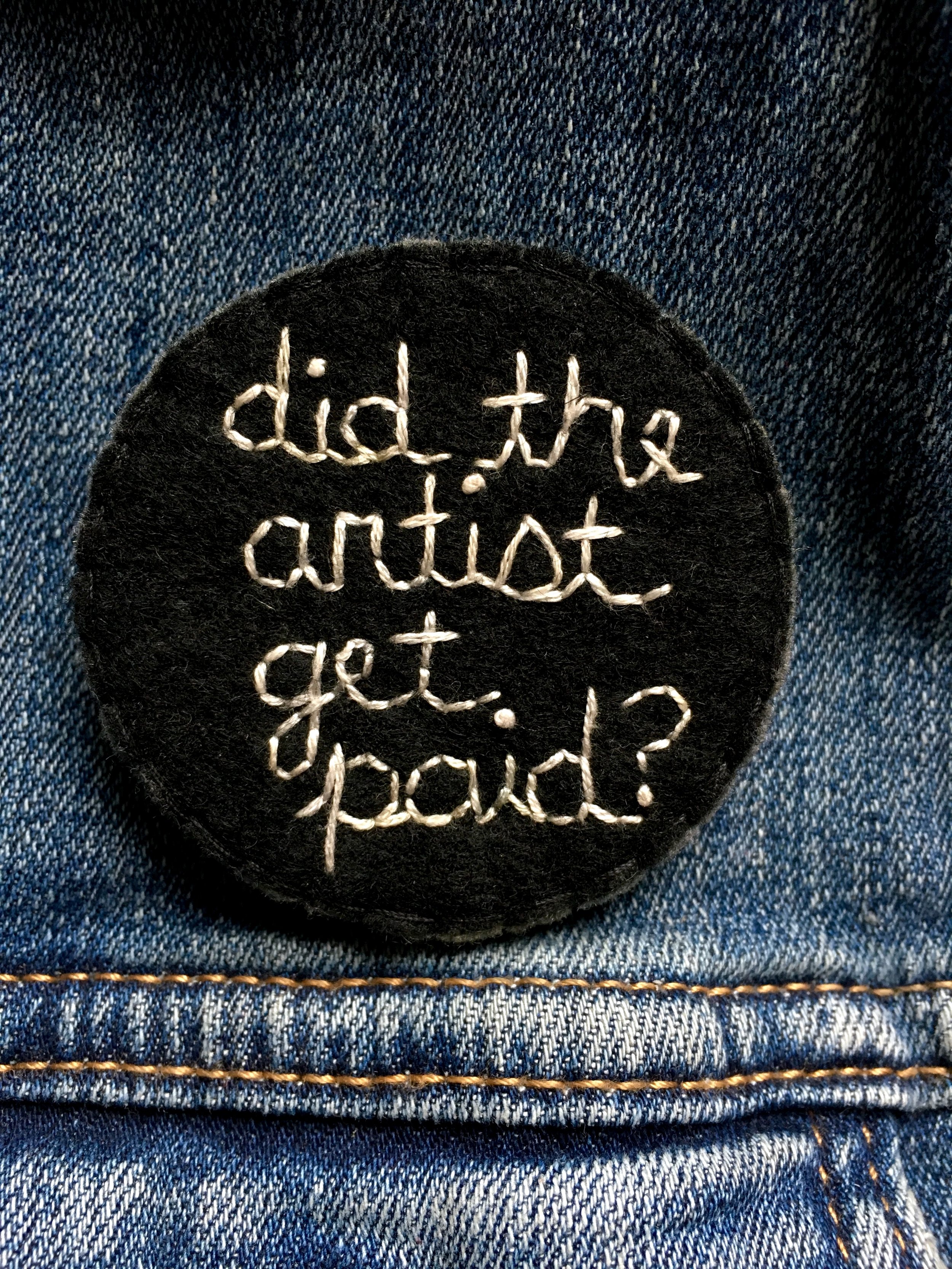Did the artist get paid?
This is a question that needs continued awareness surrounding it in myriad arts communities.
Exposure is often touted as a generous form of compensation, especially for young and emerging artists. Exposure is payment in the form of attention for artists, and that exposure may be a benefit to their career, but the necessity of monetary compensation for all creative individuals must become more common…scratch that, mandatory.
When any form of monetary, or trade, compensation is removed from the equation in an exchange of creative goods and/or services, the trope of the starving artist is allowed to persist as a dominant narrative - especially in the mindset of many non-artists. Non-artists are often the individuals that need the most convincing to make this cultural shift from believing that only established artists deserve compensation for their labor, to understanding and accepting that all artists, creatives, and performers deserve compensation for their work beyond attention. So let’s keep talking about it!
A couple of years ago, a studio arts colleague of mine had a plastic button on his backpack that read something like “Did the artist get paid?” It resonated so deeply with me that someone else had been compelled to push this question out into the world, and while I was already in agreement with the message demanding distribution to the collective consciousness, it still felt scary to parts of me. I think it was the non-verbal creatrix part of me that cannot be bothered with financials, as well as a part of me that had and still has a lot of baggage to unpack as far as money matters are concerned which both felt most resistant to the question. Those two parts of me have been simultaneously above and afraid of addressing money matters head on for fear of scaring away a broader potential audience for my work. And I gotta say, I now see those fears as utter crap.
The practical, grounded parts of me that are concerned with immediate survival and self-sustainability demands value, and remembers that as an artist I have to: earn an income each month, make a supply list, make a supply budget, do the supply shopping, pick up and receive materials donations, make the work, collaborate, document or arrange for the work to be documented, write about the work, send the emails, apply to shows and residencies, have studio visits, accept offers to exhibit, title, price and inventory the work, package the work for display, drop off and/or install the work, provide materials for press release, travel to attend the openings, speak about the work to friends, colleagues and strangers, answer tough questions, answer questions that challenge my desire to be kind with my audience, take questions that seek to pervade my boundaries and maybe answer them in full, in part or refuse to answer them at all, answer probing materials and process questions while still keeping some secrets to myself, post about the work on social media, etc. This is a lot of the work that a typical artist today undertakes in order to get to the place where the work is seen, processed, understood, appreciated by some, and hopefully collected - insert the long anticipated monetary exchange that is the reward for the practical part of me that knows I need to be compensated here. This part of me is constantly on the hunt for new ways to improve the sustainability of this process: the cycle of creation and compensation.
A couple of months ago I had to leave a full time job that was draining my spirit, and respond to the call that begged me to investigate how I could seek to make a living from my studio practice. I don’t have the answer for how to do this effectively for myself yet - I still have some of my own unpacking to do - but I decided to embroider this question, “did the artist get paid?” onto a wool felt brooch as an activated form of spell work that I can share with others when I wear it, or offer for others to collect (yes, buy) and share the topic with others when they wear it.
Wearing this message has has sparked some conversations that point out to me that I am not alone in these efforts. It also has made me sad and angry to learn how some business owners and individuals continue to take advantage of artists that have not yet learned to draft labor contracts, demand money upfront, and establish a payment plan with clients for commissioned work. The artists are so afraid to bring up the demand any upfront compensation for fear that it will scare off the offer of any compensation at a later date that they end up doing the work and purchasing all of the materials on their own dime, and wait for months on end to see some, if any compensation. How awful!
So let me say this before I close: research gallery, client, and collector contracts, learn how to draft a contract, agree on a value for your work, ask for 1/4 to 1/2 payment upfront for commissions (even with friends) and include this in your contract, give your labor an hourly rate and include that in the cost for your work, and know when to adjust your prices.
This is not a comprehensive deep dive into the topic, I have a writing time limit to try to honor here, remember. I hope it sparks some re-thinking and rewiring work for you and others. It’s not an exact science, but artists’ work must have value.
Let’s get paid.
